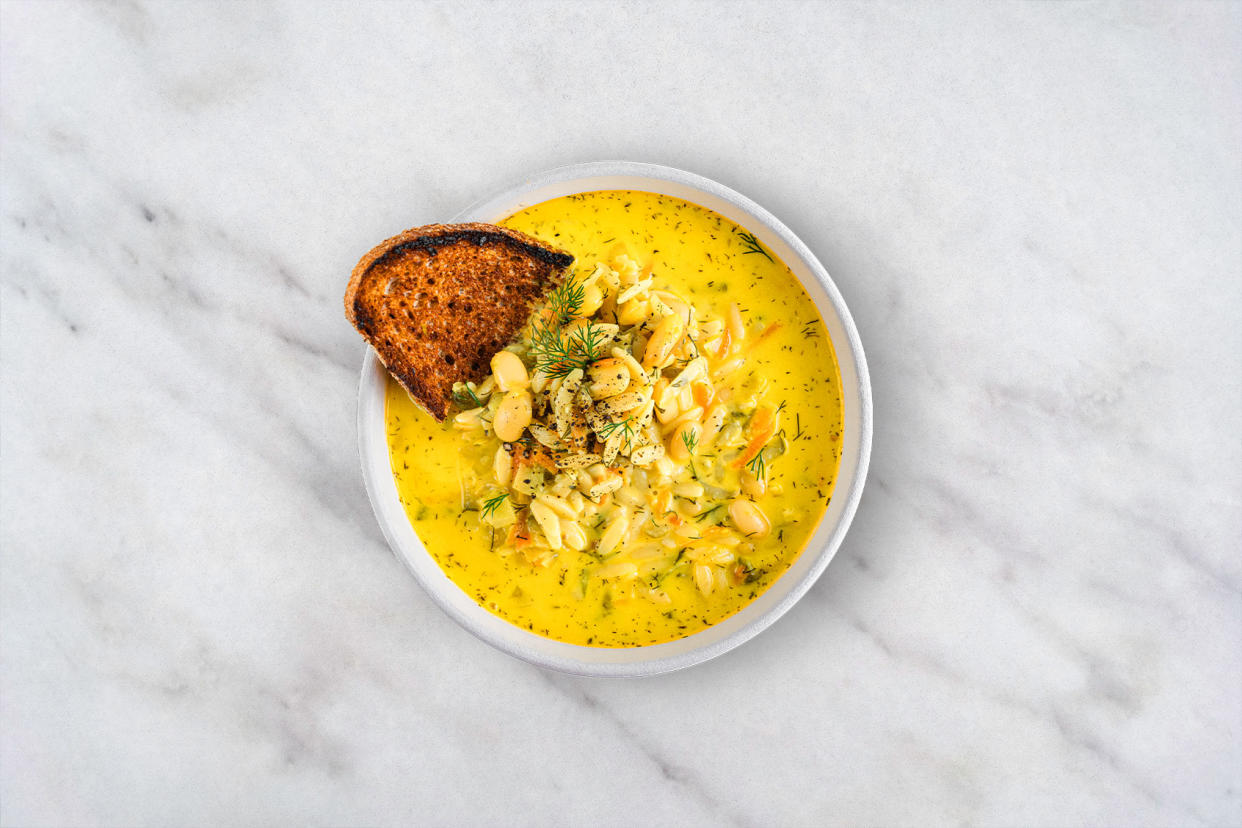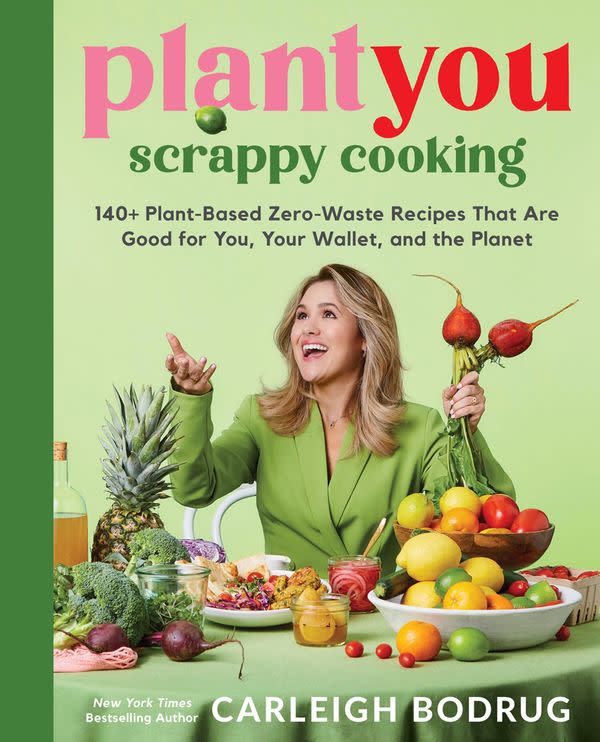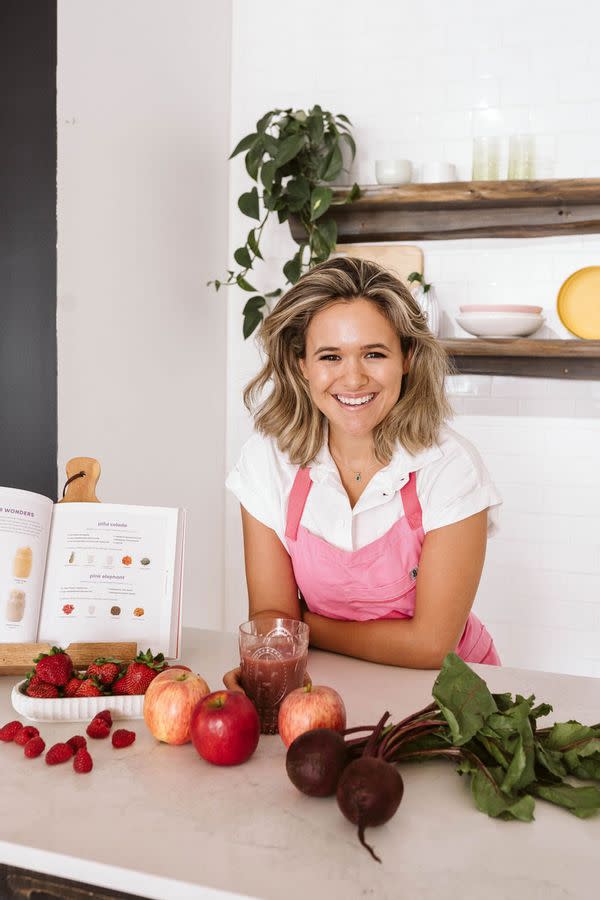To waste less food, become a scrappier cook

For some, minimizing food waste is a magnificent idea in theory, but it falls apart when it comes to execution. Using blemished produce? Eating the trims or scraps or peels we usually throw out?
These seem like small changes, but if you’ve cooked, prepped or eaten in the same way for many years, they can feel unnatural or cumbersome, especially on busy weeknights.
That’s where Carleigh Bodrug comes in.
Bodrug, the author of the new book "PlantYou: Scrappy Cooking: 140+ Plant-Based Zero-Waste Recipes That Are Good For You, Your Wallet, and the Planet,” believes that entering the zero-waste space does not have to be very challenging at all — and, in most cases, can be both fun and imaginative, too. And, as inflation, “shrinkflation” and “greedflation” continue to cause food prices to skyrocket, this practice is something we all could get better at adapting.
“The idea for ‘Scrappy Cooking’ started from a shocking statistic: 30 to 40% of the entire United States food supply ends up in landfills, a lot of which stems from household waste,” Bodrug told Salon Food. “As you may have guessed, food waste is a not-so-great thing for our planet and obviously, our wallets as well.”

As a vegan blogger, Bodrug said she was “already mindful of [her] environmental impact,” but it wasn’t until she published a quick Instagram video of her turning discarded orange peels into candy resonated with the platform’s users, garnering 1 million views, that she realized she had an audience for her message.
"I couldn’t believe how many people were jazzed about reducing their food waste, and eating more plants,” she said.
As such, in reading through the book, Bodrug’s enthusiasm is palpable; her tone and approach is so unpretentious and straightforward that, each time she recommended a minor tweak or simple change, I found myself inadvertently nodding and thinking, “Yes, I must incorporate this!”
Want more great food writing and recipes? Subscribe to Salon Food's newsletter, The Bite.
For instance, Bodrug says she is “obsessed with repurposing coffee grounds.”
“I have a delicious mocha flavored granola recipe in my new cookbook that utilizes spent coffee grounds to enhance the chocolate flavor,” she said. “Additionally you can use spent coffee grounds in a bowl in your fridge as a natural deodorizer, or as a fertilizer for some plants."
Win-win! Who would turn that down? Similarly, I'm obsessed with onions and garlic and was especially intrigued by a trick Bodrug mentions in the "Got this? Make that" section of the book.
"One of my favorites is turning onion and garlic skins into a delicious seasoning,” she said. “Not only does this save me from purchasing packaged seasoning at the grocery store, but it's also incredibly simple to do. You'll find this recipe featured in my cookbook, along with various other powders."
Beyond ideas for transforming kitchen bits and bobs, Bodrug also outlines some broader best practices for cutting down on cooking waste: invest in “glass sealable storage containers” for produce like berries and spinach; wrap leafy greens in a clean cloth or paper towel “to help absorb moisture, which is the culprit for a lot of spoilage”; root vegetables should be absorbed in dark, cool well-ventilated, while most vegetables don’t do well in plastic bags, so instead opt for mesh or cotton. Or, as she put it, just simply “go without.”
Furthermore, one of the simplest ways to cut down on food waste is to actually keep track of your pesky leftovers and make a quick plan for how to utilize them.
“Eat them for lunch the following day, incorporate them into new recipes, or freeze them for later use,” she said.
Once you’ve tackled some of the food waste in your home, Bodrug said that conscientious shoppers can find ways to make a difference even before they bring food into their kitchen. For instance, “best before” dates on food packaging can sometimes be misleading. "Best before dates are exactly what they suggest — best before,” she said. “We take them very literally and think the food is no longer edible after that date, but it’s more than often not true.”
The best way to approach shelf life is to use your senses, she continued.
"Smell and look at the appearance of the food for any signs of spoilage. That’s going to be a better indicator than anything else,” Bodrug said. Shoppers can also keep an eye out for blemished or less than aesthetically ideal produce while at the store.
"So often wonky shaped butternut squashes or single bananas are left behind — so you can intentionally pick them up,” Bodrug said, which can then be turned into some of the recipes in her book.

When I asked Bodrug about her favorite recipes from “Scrappy Cooking,” she mentioned the lemon peel pasta where she utilizes “the whole lemon from the juice to skin, ensuring no waste is left behind.” She also mentions her Citrus Cabbage Slaw and Broccoli Stem Summer Rolls, both of which incorporate broccoli stems.
If you’re paying for broccoli stems by weight, then discarding them, you’re throwing money down the drain — and they’re so delicious,” she said.
The book is also so bright and upbeat, with colorful visuals galore, including images of each of the ingredients that go into each dish.
“This journey was inspired by how I started my Instagram account, which initially focused on creating infographics demonstrating simple and easy recipes,” she said. “I've found this approach incredibly useful, particularly for first-time cooks, kids, and anyone looking to gain confidence in the kitchen, especially with plant-based cooking.”
For some, the notion of cooking zero-waste and plant-based seems wildly difficult and possibly too challenging to even approach, but Bodrug makes it seem seamless. And it's as simple as that to save money, prolong your produce, do your part to help preserve the planet, and also eat some darn good food, too.
"I’m so grateful for where this scrappy journey has taken us so far, I’m eager to see how it makes a difference one recipe at a time,” she said.

